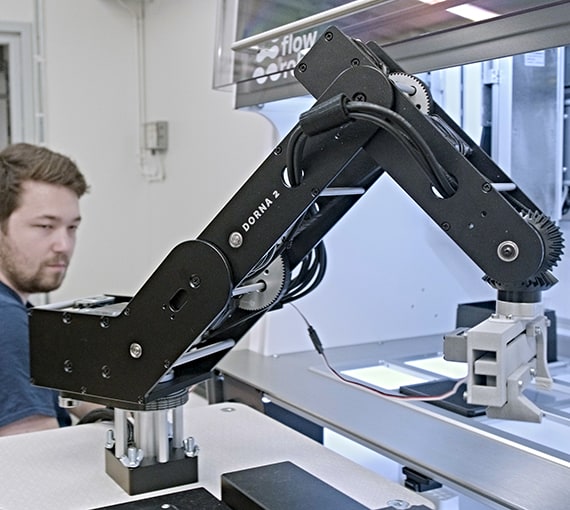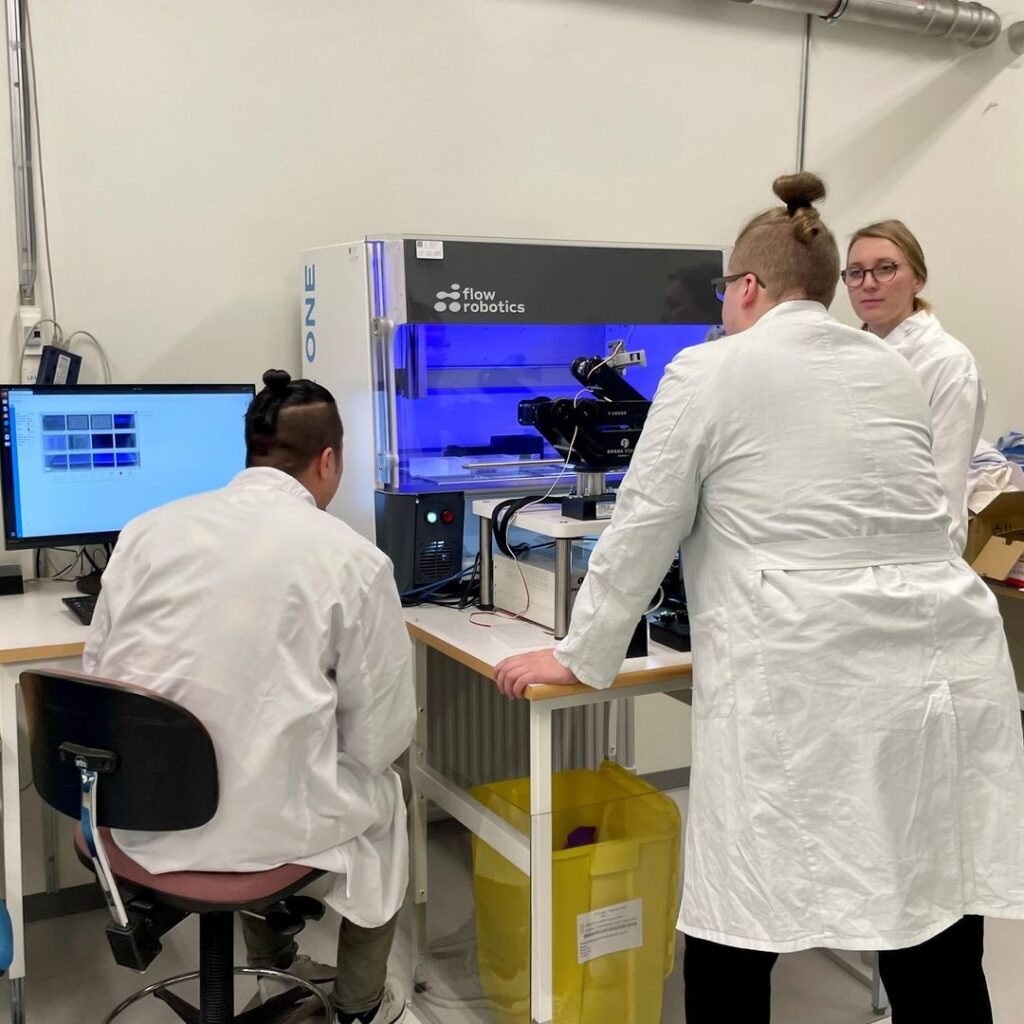Lab Automation
Dorna In Lab Automation
Automation has enabled industries in healthcare and life sciences such as pharmaceutical companies, clinical diagnostics labs, and research centers to…
26 minute read
Robots are used in lab automation for a variety of tasks, such as liquid handling, sample preparation, and equipment operation. They can perform repetitive or dangerous tasks with high precision and accuracy, and can also be programmed to adapt to different protocols or workflows. This allows for increased efficiency and reproducibility in laboratory processes, and can also free up scientists to focus on more complex tasks. Robots can also be used to work with hazardous materials or in sterile environments, where human intervention is not possible.
Furthermore, at a university lab, robots can be used to teach students and researchers about robotic programming and control, providing a hands-on experience and allowing them to learn how to program and control robots in a laboratory setting.

Dorna Robotics has been recently working with Professor Jordi Carreras-Puigvert and his team at Uppsala University to help them with automating certain processes in their Pharmaceutical Biosciences lab.
Robots are used to prepare samples for analysis, such as sorting and counting cells, or isolating specific compounds from complex mixtures. They are also used in transferring samples and well to and from liquid handling devices.
Professor Carreras-Puigvert utilizes robots in conjunction with electronic microscopes and liquid handling equipment in his lab to automate the movement of samples between devices. He offers students the chance to gain experience with robotics and incorporate automation into their laboratory procedures.

Overall, the use of robots in university labs can increase the efficiency and reproducibility of research, provide hands-on learning opportunities for students, and improve safety in the lab environment.

Dorna simple and intuitive programming interface makes teaching the robot very simple even for students and researchers with no background in coding. Furthermore, the native support for Python, allows students and researchers to seamlessly integrate their existing workflow and instruments with the robot under a unified programming environment.

Rikard Nyström Lecturer at the Department of Pharmaceutical Biosciences at Uppsala University, and one of the instructors for the course, explains the flexibility of Dorna and its ease of use in the following terms:
“It’s easy to say that I am very impressed with the level of polish of your product and also how easy it is to get started with, while you are still able to develop your own more advanced protocols if needed.
The impressive flexibility of the Dorna 2 robotic arm enabled us to easily adapt it to several different use cases within our lab. Developing a new workflow is quick and easy with the web-based control software, while still allowing for more advanced control via the Python API along with integration with other equipment. In fact, this is my preferred way to work with the product; fast iterative testing via Dorna lab, and then translating to Python before further developing into a final protocol.
The user-programmable I/O ports proved incredibly useful for us and stand out as a rare feature of the Dorna 2. It allows us to control simple instruments close to or connected to the robot arm within the same control system, drastically simplifying coordination with our own special equipment, such as our 3D-printed grippers.”
Robotics programs at universities can help universities to conduct research and development in various areas such as autonomous systems, machine learning, and human-robot interaction.
They also allow universities to establish connections with industry partners, leading to internships, job opportunities, and research collaborations for students.
These programs provide opportunities for universities to develop new curricula and provide students with hands-on experience in emerging technologies.
Robotics programs can also help universities train students for careers in the robotics industry, contributing to the development of a skilled workforce in the field.
Dorna Robotics has already helped dozens of university labs adapt robots into their programs. If your lab is interested in gaining benefits from robots while saving money and avoiding huge investments in expensive equipment, our robots, and accessories could be a great fit. Please contact our sales team for more information on how we can help your program.
Lab Automation
Automation has enabled industries in healthcare and life sciences such as pharmaceutical companies, clinical diagnostics labs, and research centers to…
26 minute read